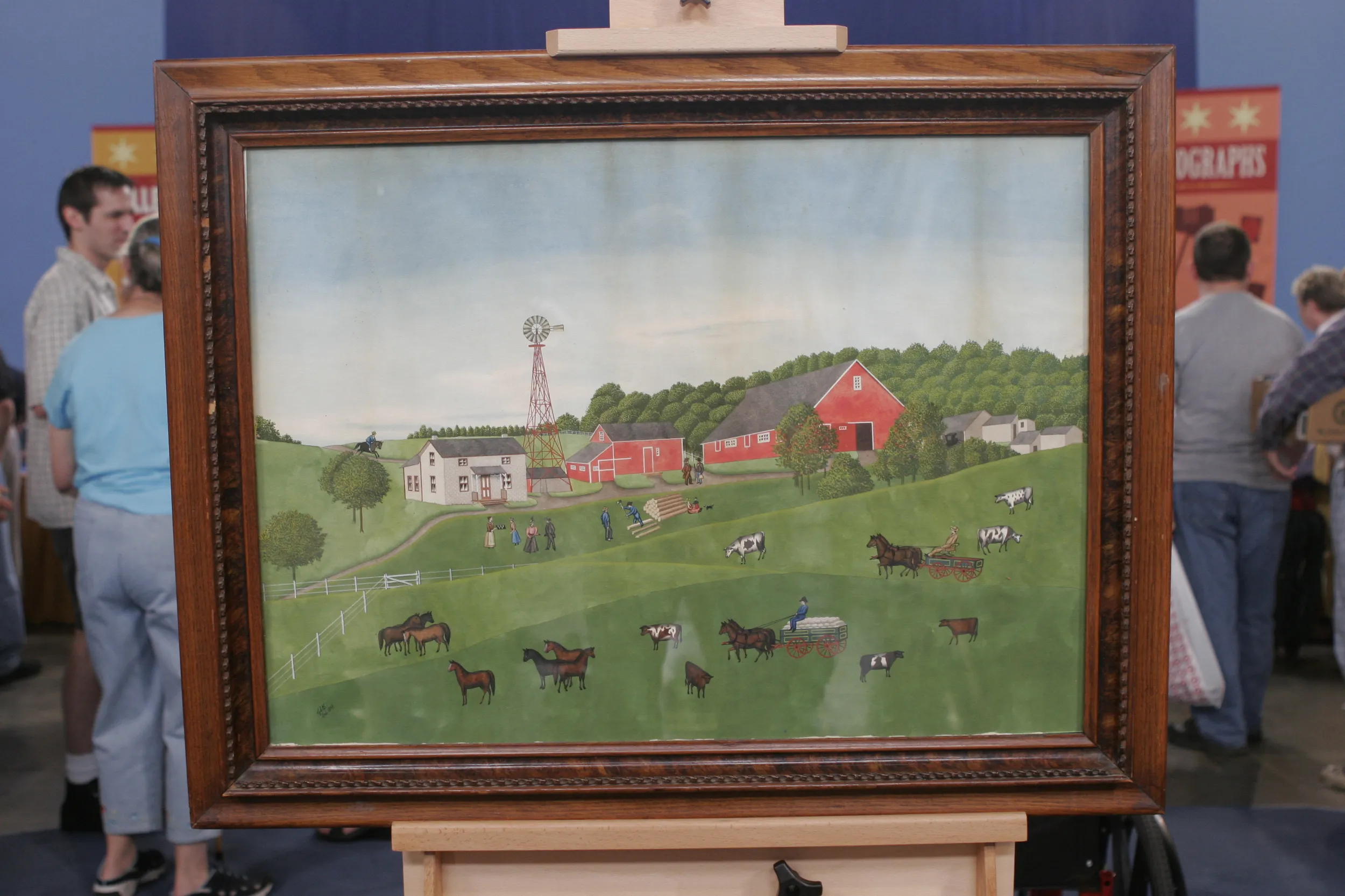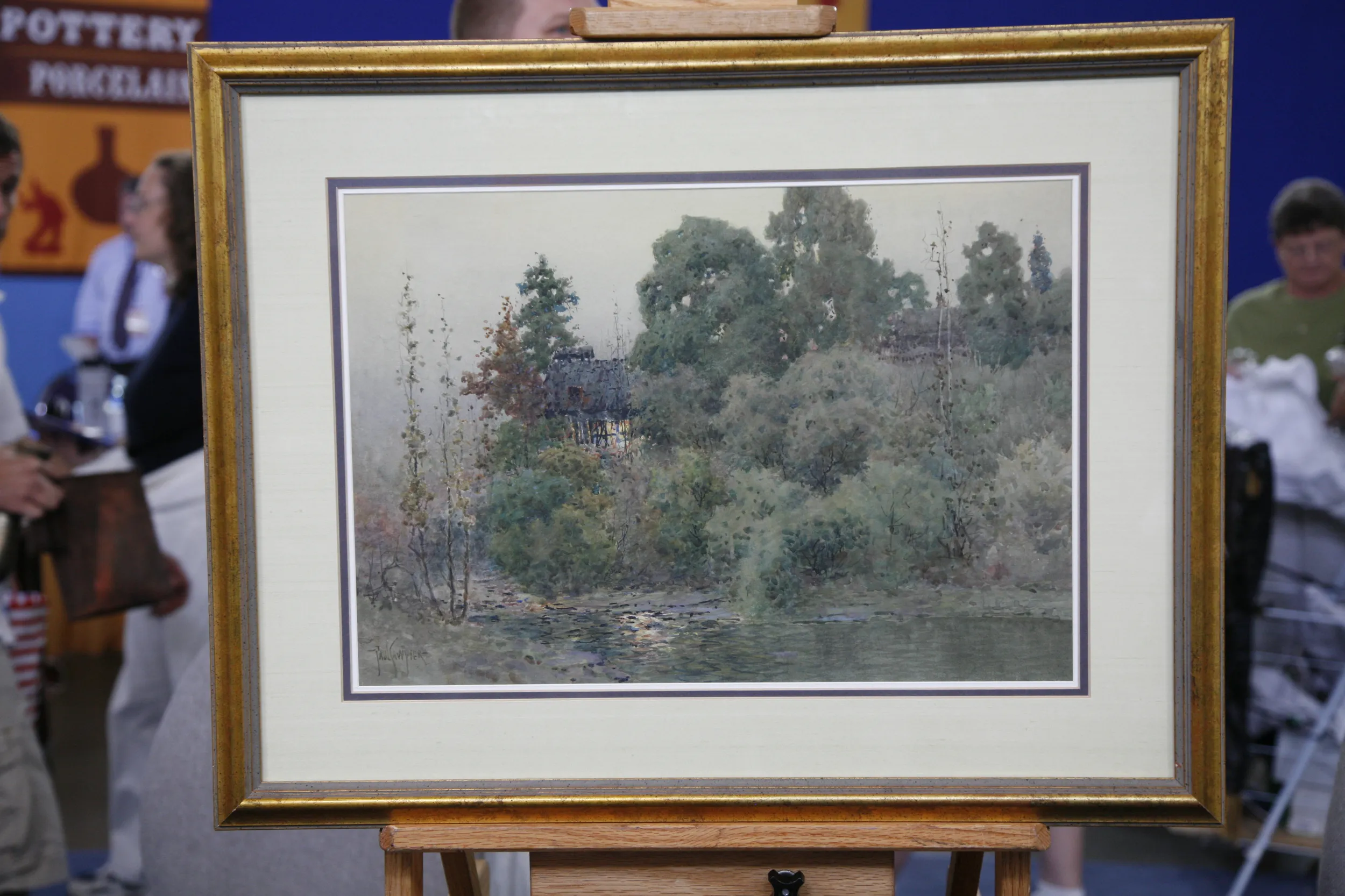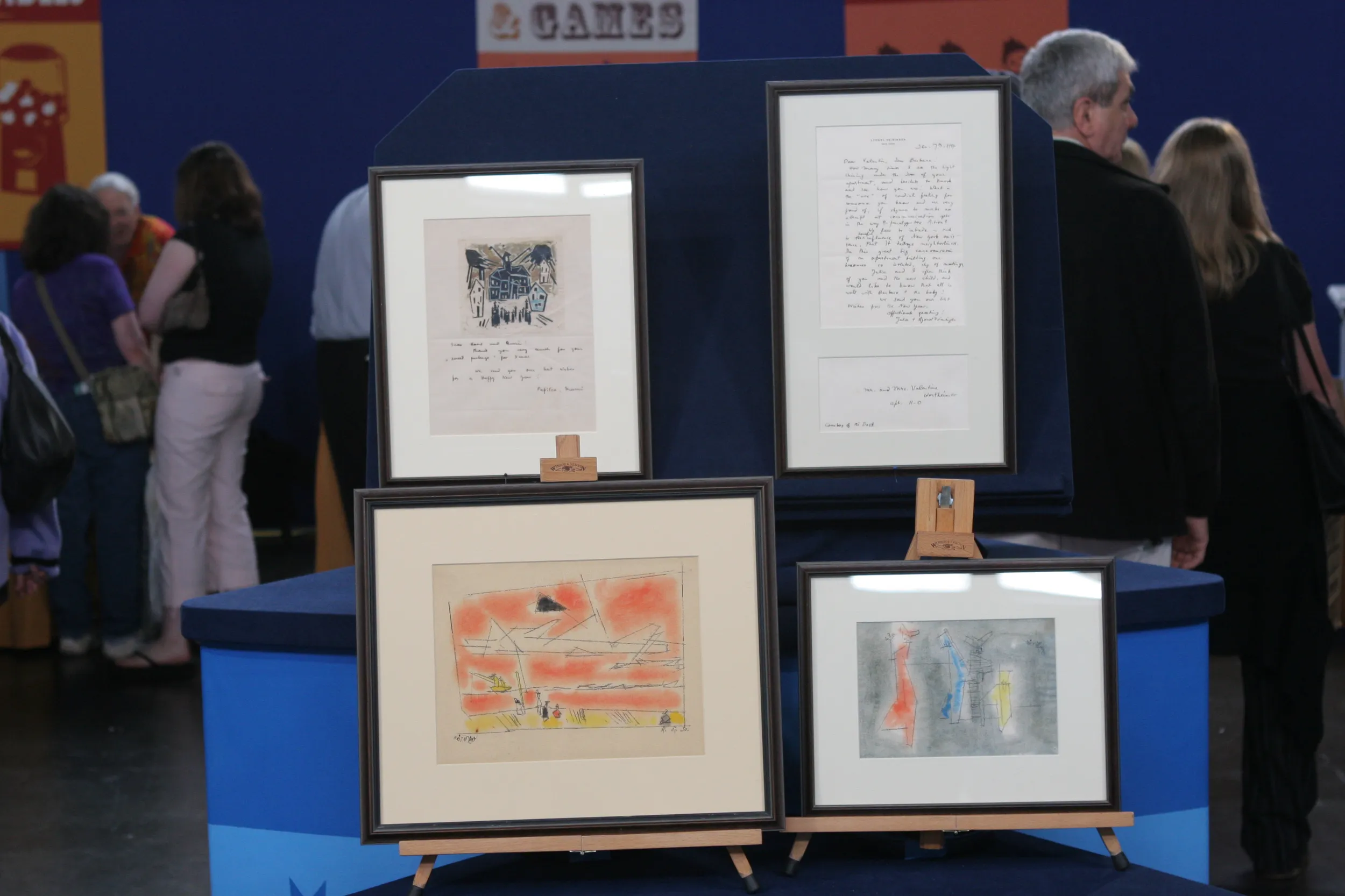GUEST: I inherited it from grandparents.
APPRAISER: And where were they from?
GUEST: My grandfather had railroad interests in these parts, and he came down from New England. They were from Kennebunk, and they came down in the 1840s, and they got into railroad interests, and then they decided they liked it down here and they bought a plantation.
APPRAISER: Now, I see that it's signed "Frederic Remington, 1890," and referenced as being number nine. When do you suspect that it came into your family?
GUEST: They did a lot of traveling and bought valuable things in the 1890s to about 1920, in that range.
APPRAISER: And were they interested in Western art, or just whatever caught their fancy?
GUEST: Whatever caught their fancy. We have various things.
APPRAISER: So the family history, then, is that it's been through your family since it was arguably acquired in 1900, the turn of the century.
GUEST: That's correct.
APPRAISER: In 1900, Remington was a known artist. However, in 1900, people weren't copying his work. It wasn't something that would have been thought of at the time. And based on your family history with the piece as well as the quality, the rhythm, the palette, I'm quite confident that the piece is a genuine Frederic Remington. To my eye, it's a wonderful example of Remington's work in the 1890s. We want to do a lot more research on the figure. Is he a scout? What is the series that's being referenced? Is it in the catalogue raisonné? Well, I wondered, with the number on there, I didn't know if it was a print or a painting.
APPRAISER: That's what bothered me.
GUEST: No, it's a watercolor. It's an original watercolor. In terms of the quality of it, one of the reasons that Remington's work is so popular now, was popular in 1900, is because of the freshness and the exactness of his hand, really a loose hand, really a great vitality in what he was doing. So even though it's a very specific figure, it's very loose and contemporary and appeals to a contemporary audience. In terms of condition, the paper has been toned, and you have some creasing here. As I said, it's something that we want to do more research on and make certain that it's in the catalogue raisonné, but given the family history with the piece and the quality of the piece and taking into account the condition, I would value it at auction between $80,000 and $120,000.
GUEST: I see. Uh... Would you do anything with it, or is it leave it just the way it is? You pointed out some imperfections.
APPRAISER: I would probably take it out of the frame and make certain that it was conserved properly.
GUEST: I've heard it a million times on the Roadshow. I didn't expect that. (laughter)











